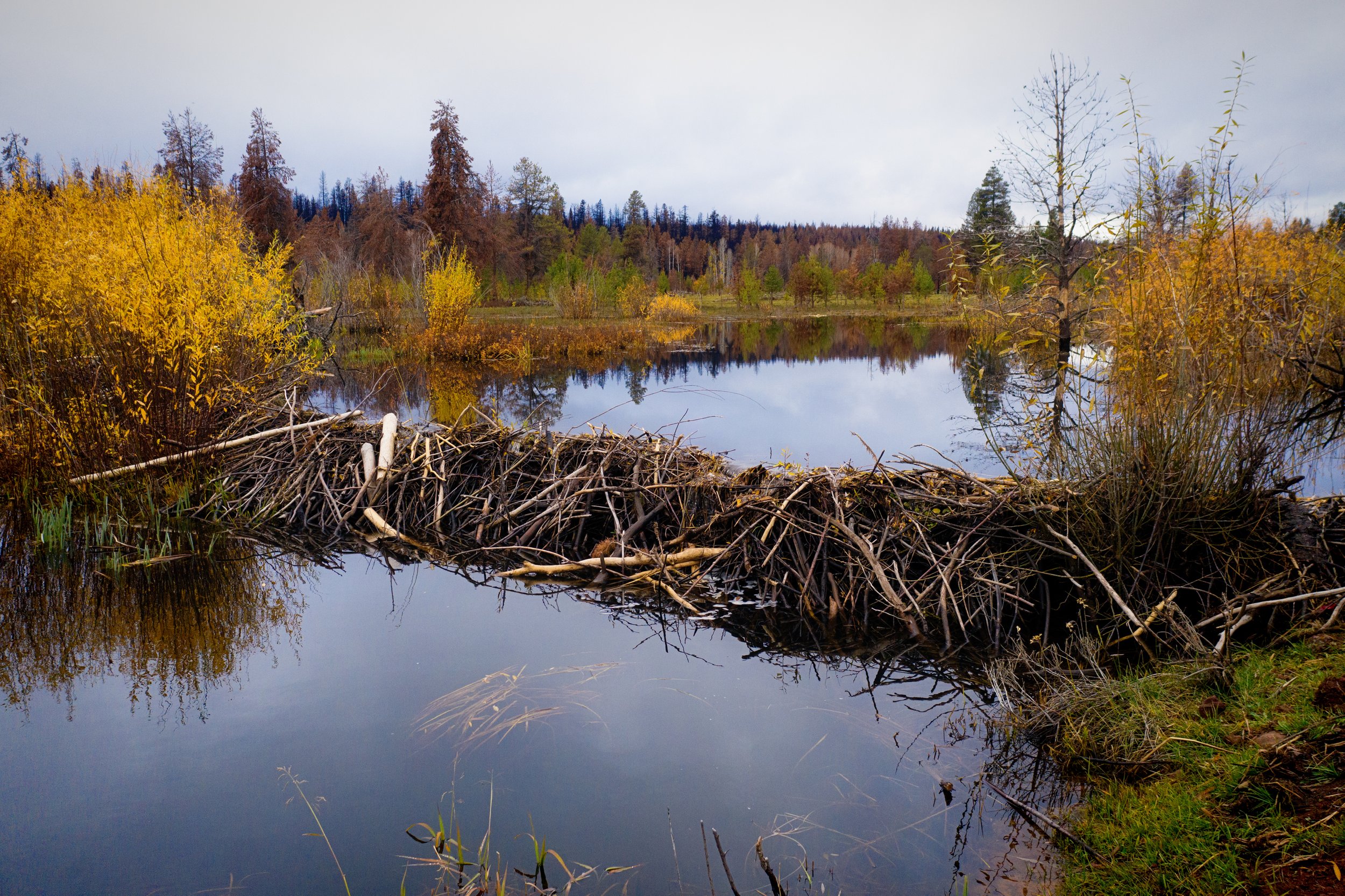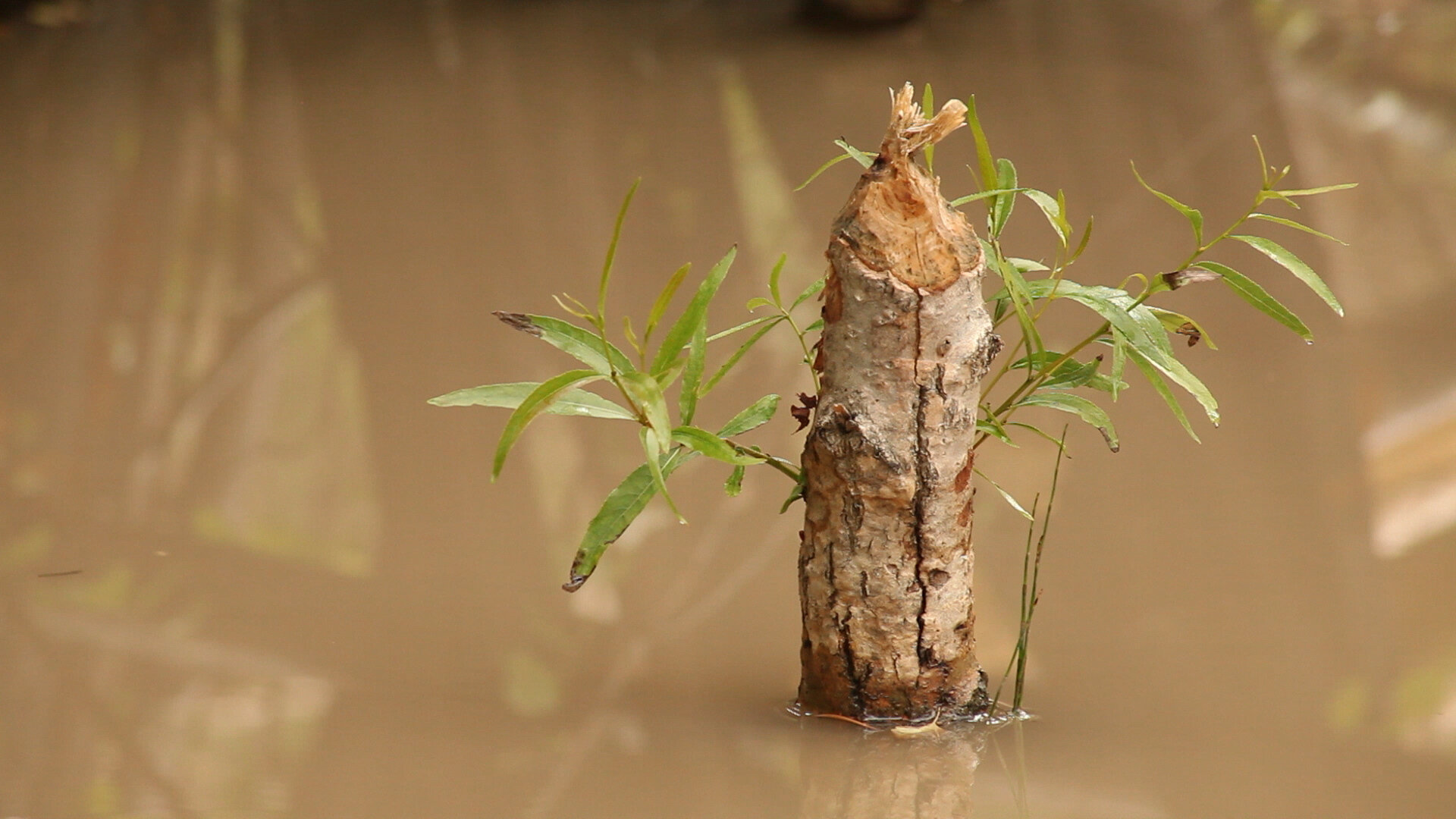
Nature’s engineer
It’s become well known that beavers are ecosystem engineers. As a keystone species they have a disproportionally large effect on their surrounding ecosystem. If they are removed everything else suffers.
When they build a dam and create a pond they are expanding wetland habitat, cooling and recharging groundwater, diversifying the micro-habitats within the stream channel, building speed bumps that slow down the force of floods, and securing fire breaks.

Giving more than a dam.
For millennia beavers have been building the living conditions that salmon, steelhead, lamprey, frogs, turtles, and willow flycatchers require. But beaver benefits are not restricted to dams alone: their bank tunnels shelter young fish; native turtles bask on their lodges; and migratory birds nest in their coppiced willows. Even the beavers’ simple act of cutting and moving stream-side trees and shrubs into the water as they feed builds the foundation for the aquatic food web of a stream—collections of beaver-chewed sticks become “river reefs” teeming with life. Beavers push all of these fantastic ecosystem benefits out ahead of themselves, one dam at a time. They build an aquatic kingdom, each stick and paw-ful of mud expanding a lush, diverse, resilient habitat.

While we need beavers,
these days beavers also need us.
More than simply praising the benefits of beavers, we want to specifically address why humans need to partner with beaver. It is not just that we need beavers and all of the benefits they bring; these days beavers also need us. In the context of ecosystems degraded by human activity, beavers need our help reestablishing their keystone roles. The beaver population in much of North America is now a mere remnant of their once ubiquitous presence across the landscape. In some places, we straightened streams and the water velocity is now too high for a beaver dam to persist. In other places, human actions have caused streams to incise, or drop down into a trench, lowering the water table and resulting in less building materials—namely, trees and branches—for beavers to build strong dams.
Perhaps most often, we build and farm along the same valley bottom streams as beavers, and their ideas for landscaping and keeping house come into conflict with our own. So, we trap them out—year after year—preventing them from raising young. These human actions have created limiting factors that prevent beaver from building the dams, ponds, and wetlands they normally would. In all of these circumstances there are tangible and effective tools we can employ to solve these problems and create habitat for people and beavers alike. Check out our coexistence page to learn about the tools we can employ to remedy infrastructure conflicts with beaver behaviors, and download the Beaver Restoration Guidebook for a comprehensive guide to beaver-based restoration.
